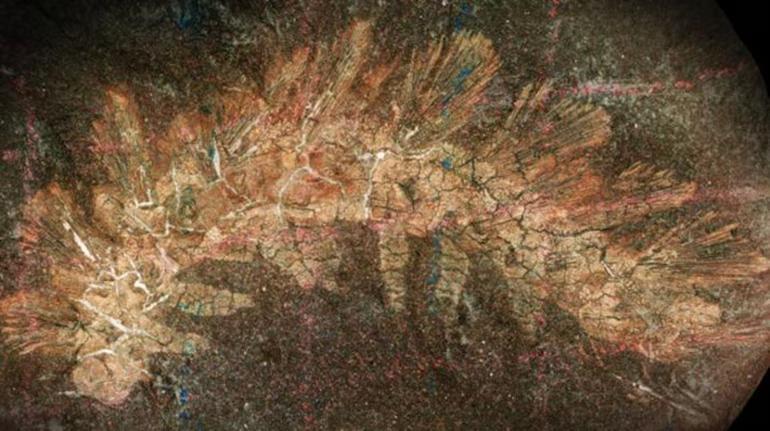
Fossil Mistaken for Caterpillar is First Land-Living Lobopodian
For over a century and a half, the fossil Palaeocampa anthrax has been thought to be a caterpillar. However, a recent discovery has revealed that this ancient fossil is actually the first land-living lobopodian. This remarkable finding was made by former Harvard student Richard Knecht, who was analyzing the fossil’s morphology.
The fossil in question was first described in 1865 by French paleontologist Pierre-Joseph van Beneden. At the time, it was believed to be a caterpillar due to its segmented body and the presence of what appeared to be legs. However, Knecht’s closer examination of the fossil revealed something remarkable. Every segment of the fossil’s body had legs, a characteristic that is unique to lobopodians.
Lobopodians are a group of ancient arthropods that lived during the Cambrian period, around 540 million years ago. They are characterized by their segmented bodies and the presence of legs on every segment. However, until the discovery of Palaeocampa anthrax, all known lobopodians were aquatic, meaning they lived in water.
The discovery of Palaeocampa anthrax is significant because it shows that lobopodians were able to adapt to life on land much earlier than previously thought. This finding has important implications for our understanding of the evolution of life on Earth.
Knecht and his team examined 43 specimens from two sites: Mazon Creek in the United States and Montceau-les-Mines in France. They used a combination of traditional fossil preparation techniques and cutting-edge imaging methods to analyze the fossils’ morphology.
The team’s research was published in the journal Palaeontology, and it has sent shockwaves through the scientific community. The discovery of Palaeocampa anthrax as a land-living lobopodian is a major breakthrough, and it has significant implications for our understanding of the history of life on Earth.
In an interview with the media, Knecht said, “The discovery of Palaeocampa anthrax as a land-living lobopodian is a game-changer. It shows that lobopodians were able to adapt to life on land much earlier than previously thought. This finding has important implications for our understanding of the evolution of life on Earth.”
The discovery of Palaeocampa anthrax is also significant because it provides new insights into the evolution of terrestrial ecosystems. The fossil’s presence on land suggests that lobopodians were able to colonize new environments and adapt to new conditions.
The discovery of Palaeocampa anthrax is a testament to the importance of continued research and exploration in the field of paleontology. As new technologies and methods become available, scientists are able to uncover new and exciting discoveries that shed light on the history of life on Earth.
In conclusion, the fossil Palaeocampa anthrax, which was once thought to be a caterpillar, has turned out to be the first land-living lobopodian. This remarkable finding has significant implications for our understanding of the evolution of life on Earth and the colonization of new environments. The discovery of Palaeocampa anthrax is a testament to the importance of continued research and exploration in the field of paleontology.
Source:






